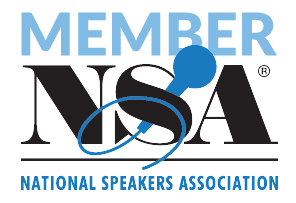
Each day nurses assess patients, develop and deliver a plan of care and evaluate patient’s progress of healing. Nurses also see patients and their families supporting one another, caring for each other and building on strengths to weather the storm.
During this process, nurses witness remarkable resilience – that ability to cope with stress / adversity and bounce back even when things are difficult.
Some experts have used the metaphor of a tree during a storm to describe resiliency – a tree that bends, but doesn’t break under the stress of a storm and continues to grow stronger and thrive after the storm.
When we experience the stress of disruptive behaviors, our “tree” may bend to the breaking point.
Coworkers who foster disruptive behaviors impact team dynamics, lower self-esteem and team morale and negatively impact workforce retention. Recently, I observed a nurse admitting a new patient from the ED. After multiple requests for help, shouting out from the room and going up to two nurses that were sitting at the nurse’s station, a nursing assistant came into the room. I saw that the nurse was brought to tears. She stated that she was getting out of this unit as fast as she could. This nurse was admitting my mom; I was heartbroken.
How might we take these observations and develop resiliency practices, so we can bend back and flourish? There are tools and strategies that can protect us against the adversity and stress that accompany disruptive behaviors in the workplace.
First, we must recognize that resilience does not eliminate stress or disruptive behaviors, but resilient people understand that life can be hard and painful. They still may experience the emotional pain, grief, and sense of loss, but their overall outlook allows them to work through such feelings and move forward.
Second, we can build resiliency by incorporating tools into our practice that help evaluate, manage and strengthen our capacity to bounce back.
Let’s look at three tools you can use right now to build your resiliency, lessen the impact of disruptive behaviors and positively change the workplace environment!
Build Relationships
A primary factor in resiliency is having caring, supportive relationships. Building these relationships with friends, colleagues and other support people are vital. Care and support around you acts as a protective factor during times of crisis. These relationships are built on trust and respect. It is important to have people you can confide in.
While merely talking about a situation with a friend or loved one will not make troubles go away, it can help to share your feelings, gain support, receive positive feedback, and come up with possible ways to move forward.
- Identify on or two people in your work setting that you can call upon during a time of crisis. They will be your “go to” person when you need help to resolve a situation.
- Support one another by scheduling breaks, times of the unit for nutrition, rest and recharging.
- Accept help and support from those around you. Assist others whenever you can.
Focus on the Positive
This practice teaches you to notice, remember, and savor the better things in life. It may prompt you to pay closer attention to positive events down the road and engage in them more fully—both in the moment and later on, when you can reminisce and share these experiences with others.
Reflecting on the cause of the event may help attune you to the deeper sources of goodness in your life, fostering a mindset of gratitude. Gratitude is seeing and appreciating the blessings of life that surround us all the time. Duke University’s research led by Sexton and colleagues demonstrate how daily gratitude strengthens a person’s resiliency.
Our brains are hardwired to remember the negative but when we choose gratitude, we focus on abundance and opportunities, and we attract more of those assets.
- Have an intentional optimistic and hopeful attitude as a key factor for building resiliency.
- Start and end your shift with three things for which you are grateful. Include yourself, family, friends, colleagues, and anyone else in your life.
- Keep things in perspective – even when facing very painful events, try to consider the stressful situation in a broader context and keep a long-term perspective.
Practice Self-care
Most nurses, me included, do not prioritize self-care. We care for our patients and families, but rarely ourselves. The ability to be resilient under stress requires you to have emotional and physical reserves to draw upon.
One of the most important ways to build these reserves is by practicing good self-care. Deliberate, conscious choices to care for your body, mind and relationships can help you manage even the most disruptive environments at work and in your life. Even if the stress temporarily knocks you down, you are more able to get up and keep going.
- Be kind to yourself. Practice positive self-talk – shifting your thinking to what who you are, what you can and will do. This practice encourages a healthy mindset. If you practice kindness to yourself, you are more likely to practice kindness toward others. Others notice, and in turn, are more likely to practice kindness to themselves and toward others as well.
- Check in with yourself. Take a compassion break and ask yourself, “What do I need most right now? Lunch? Sleep? A walk outside? Help?” Be kind to yourself by making sure you get it.
- Schedule exercise even when you don’t want to or have time to. This regular movement will help release stress and reduces the negative impact of stress.
These are but a few strategies that protect you against disruptive behaviors in the workplace. The important thing is to recognize what we can control: our attitudes, supporting others, self-care.
You can thrive and bounce back, despite adversity.
If you are interested in learning more about how you can go From Exhausted to Extraordinary, be sure to check out Renee’s mini-course: From Exhausted to Extraordinary: Strategies to Reverse Nurse Fatigue. (We are offering 50% off for a limited time!)
As nurses, we have the opportunity every day we go to work to make a difference in the lives of millions. With that huge responsibility, we are sometimes left with nothing to give to our families, our friends and ourselves.
In this mini-course, you will discover three primary strategies embraced by the nurses who seem to thrive despite the burdens. Each has a specific purpose-to provide you with a solution to the most common causes of fatigue and burnout in healthcare.
This article was written by Pam Spivey, a Healthy Workforce Institute Content Writer.












